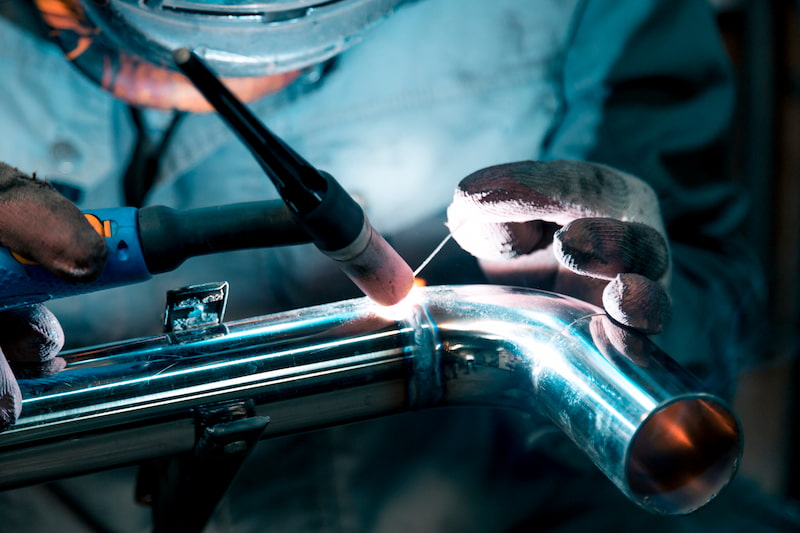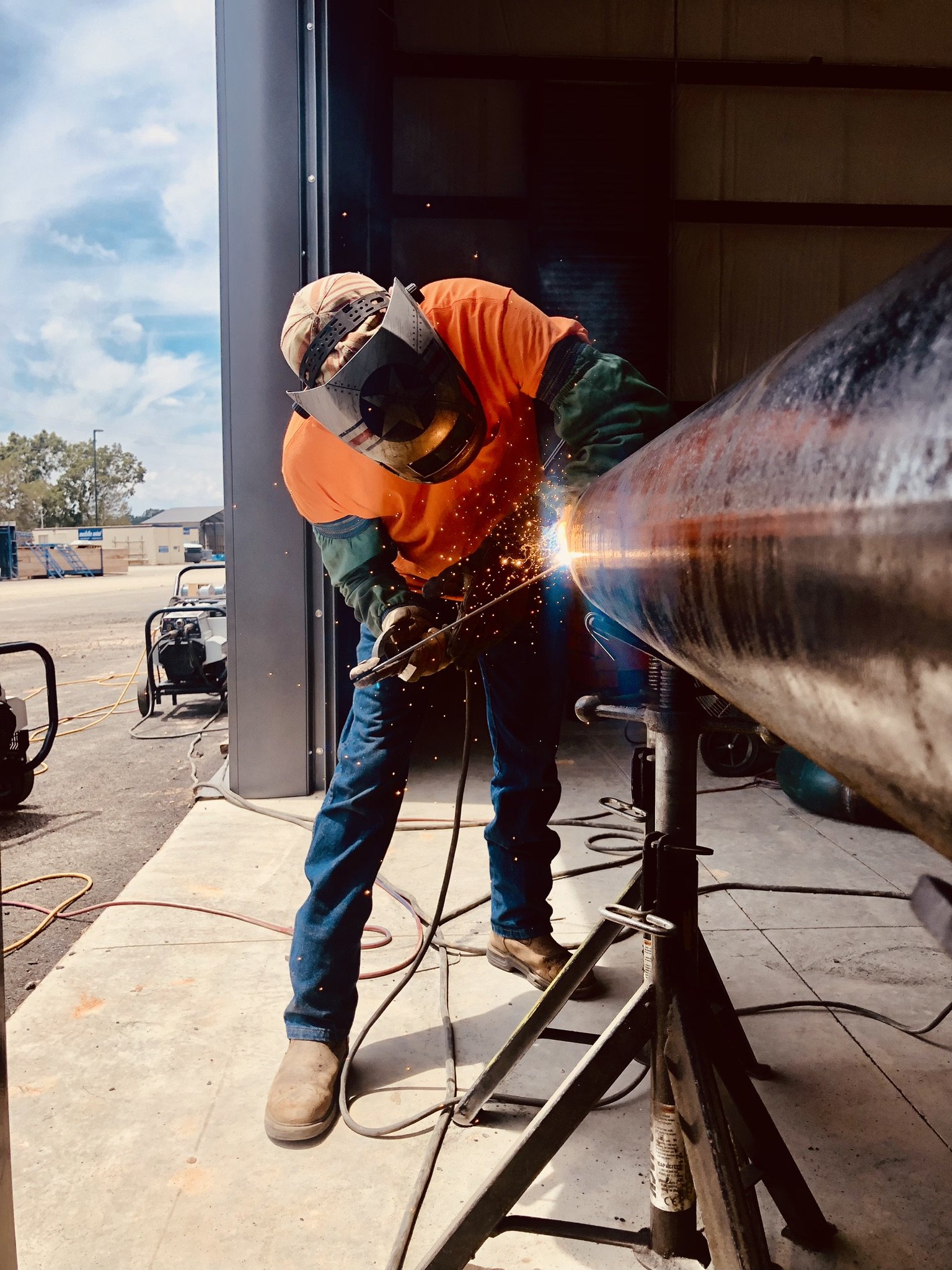Everything about Welding: Secret Insights Into Techniques and Ideal Practices for Success
Welding incorporates a range of techniques, each matched for details materials and applications. Comprehending these approaches, such as GMAW, SMAW, and TIG, is crucial for accomplishing suitable results. The right tools and safety and security techniques can not be ignored. As preparation and fixing play crucial roles in the welding process, understanding these elements can greatly enhance the top quality of the final product. What are the key aspects that ensure a successful weld?
Understanding Various Welding Methods
Welding strategies incorporate a variety of approaches, each suited to specific applications and materials. Amongst the most common strategies are Gas Steel Arc Welding (GMAW), Shielded Steel Arc Welding (SMAW), and Tungsten Inert Gas Welding (TIG) GMAW, additionally recognized as MIG welding, is popular for its speed and convenience, making it excellent for slim products. SMAW, or stick welding, is preferred for its simplicity and efficiency in outdoor atmospheres, especially with thicker steels. TIG welding supplies accuracy and control, making it ideal for elaborate job and non-ferrous steels (Belgrade). Each method has its one-of-a-kind benefits and factors to consider, allowing welders to choose the most effective technique based on the project's requirements, material kind, and desired outcomes. Recognizing these methods is essential for successful welding
Crucial Welding Devices and Devices
While numerous welding techniques call for certain skills, the appropriate devices and tools are just as important for accomplishing quality results. Important welding equipment consists of welding devices, which differ depending on the strategy-- such as MIG, TIG, or stick welding. Safety equipment, including aprons, handwear covers, and safety helmets, assurances security and comfort during the procedure. On top of that, components and clamps assist protect materials in place, ensuring accuracy in welds. Consumables like welding poles, wire, and securing gas are additionally important elements that affect the high quality of the weld. Furthermore, tools such as cutters and grinders facilitate surface area prep work and post-weld completing, contributing to an expert end result. Purchasing high-grade equipment eventually boosts the efficiency and efficiency of welding projects.
Security Practices in Welding
Correct security practices are essential in the welding market to protect workers from prospective dangers. Welders must wear proper personal safety equipment (PPE), consisting of safety helmets with appropriate shading, handwear covers, and flame-resistant clothes. Sufficient ventilation is important to lower direct exposure to dangerous fumes and gases created during the welding process. Additionally, employees should be learnt the correct handling of welding devices to avoid accidents. Fire safety and security actions, such as maintaining flammable materials away from the welding location and having fire extinguishers easily offered, are necessary. Routine assessments of tools and work spaces can aid determine potential dangers before they cause crashes. By sticking to these security practices, welders can develop a much safer working setting and decrease threats connected with their trade.
Readying Materials for Welding
Preparing materials for welding is a vital action that greatly influences the top quality and stability of the end product (Montana Mobile Welding and Repair Belgrade Welding). Correct preparation includes cleaning the surface areas to remove pollutants such as dust, oil, and corrosion, which can jeopardize the weld. Methods such as grinding, sanding, or making use of solvents are typically utilized to accomplish a clean surface. Furthermore, making certain that the materials fit together comfortably is essential; voids can bring about weak welds. It's additionally essential to think about the placement and positioning of the components, as this will certainly influence the simplicity of welding and the final outcome. Choosing the ideal filler product and guaranteeing compatibility with the base steels is essential for achieving strong, long lasting welds.
Tips for Getting High-Quality Welds
Accomplishing premium welds calls for interest to detail and adherence to best practices throughout the welding procedure. Appropriate joint prep work is necessary, guaranteeing surfaces are clean and totally free from impurities. Choosing the proper filler material and welding strategy based upon the base steels is vital for optimal bonding. Keeping constant traveling speed and angle while welding can prevent problems and promote harmony. In addition, managing warmth input is important; too much heat can result in bending and weakened joints. If needed, frequently examining the welds during the process allows for prompt modifications. Click This Link Lastly, employing suitable post-weld treatments, such as cleansing and tension alleviation, can improve the durability and integrity of the weld, ultimately guaranteeing an effective outcome.
Troubleshooting Common Welding Issues
Welding typically presents obstacles that can affect the quality and stability of the end product. Usual problems such as porosity, irregular weld grains, and overheating can arise, each requiring particular repairing techniques. Comprehending these troubles is crucial for welders to improve their skills and attain excellent outcomes.
Porosity Problems Explained
Although porosity can frequently be overlooked, it stays a critical issue in welding that can compromise the integrity of an ended up item. Porosity describes the existence of little gas pockets within the weld grain, which can lead and compromise the joint to my blog premature failing. This issue normally arises from contaminants, wetness, or inappropriate shielding gas protection throughout the welding procedure. To reduce porosity, welders ought to validate that the base products are dry and clean, utilize suitable protecting gases, and maintain consistent welding criteria. Regularly inspecting the tools and setting can additionally help determine prospective issues prior to they show up in the weld. Attending to porosity successfully is vital for attaining solid, durable welds that meet top quality criteria.

Inconsistent Weld Beads
Irregular weld beads can substantially influence the high quality and stamina of an ended up product. Various aspects contribute to this issue, consisting of improper traveling rate, incorrect amperage settings, and irregular electrode angles. When the welder relocates too swiftly, a bead may appear narrow and lack penetration, while relocating too gradually can cause excessive accumulation. In addition, utilizing the wrong amperage can lead to either damaging or extreme spatter, both of which concession weld stability. The welder's method, such as irregular lantern movement, can also result in irregular bead look. To reduce these issues, welders should concentrate on maintaining constant, regulated motions and making certain appropriate equipment setups to achieve harmony in their welds. Consistency is website here key to accomplishing solid and trusted welds.
Getting Too Hot and Bending Issues
Extreme warmth throughout the welding process can result in considerable overheating and contorting concerns, impacting the structural stability of the work surface. These troubles commonly materialize as distortion, which can endanger positioning and fit-up, making more setting up challenging. Variables adding to overheating consist of the selection of welding parameters, such as voltage and take a trip speed, in addition to the sort of material being bonded. To alleviate these problems, welders must preserve constant travel speed and proper warm input while keeping an eye on the work surface temperature. Furthermore, pre-heating or post-weld warmth treatment can help minimize tensions brought on by quick cooling - Belgrade Welding. Routine assessment and adherence to finest practices are essential in protecting against getting too hot and making sure the long life and dependability of bonded structures
Frequently Asked Inquiries
What Are the Profession Opportunities in the Welding Sector?
The welding industry uses diverse job chances, including positions as welders, educators, designers, and examiners. Professionals can operate in production, construction, aerospace, and auto markets, profiting from solid demand and competitive incomes in various duties.
Just How Can I Improve My Welding Rate Without Giving Up High Quality?
To boost welding speed without sacrificing quality, one should practice effective strategies, keep equipment, maximize settings, and enhance hand-eye sychronisation. Normal training and looking for comments can additionally considerably add to achieving quicker, high-quality welds.
What Accreditations Are Readily Available for Welders?
Various accreditations exist for welders, including those from the American Welding Culture (AWS), the National Center for Building Education And Learning and Research Study (NCCER), and numerous industry-specific organizations. These qualifications enhance employability and show ability proficiency.
Exactly How Does Welding Influence the Features of Metals?
Welding affects the residential or commercial properties of metals by altering their microstructure, which can cause modifications in firmness, ductility, and toughness. Warm input and air conditioning rates during the procedure significantly affect these material features.
Can I Bonded Dissimilar Metals Together?
